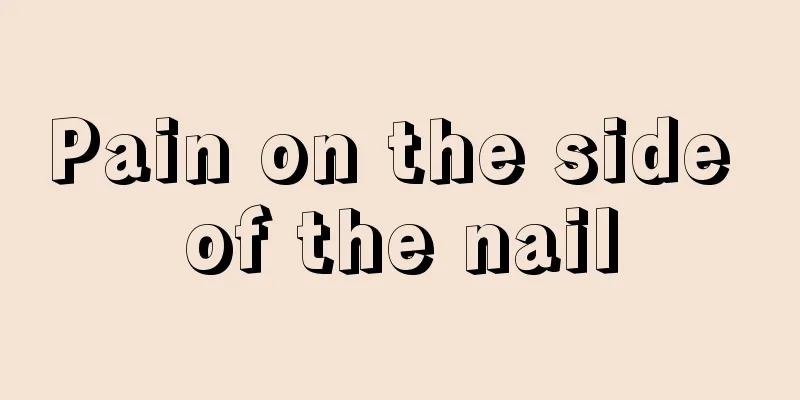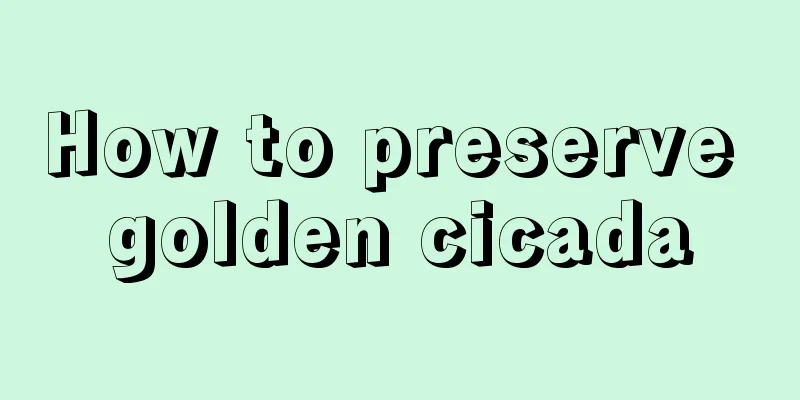Pain on the side of the nail

|
Pain on the side of the nail is a very common symptom and also a clinical manifestation of paronychia. Paronychia is a disease caused by improper care of the area around the nails. Once this disease occurs, it will cause great physical and mental suffering to the person, so you must go to the hospital in time and receive treatment under the guidance of a doctor. Next, I will introduce you to some relevant knowledge about paronychia! 1. Overview Except for the free edge, the other three sides of the nail are connected to the skin folds, and the connecting part forms a groove, which is called the nail groove. Paronychia is an infection that occurs in the nail groove. Most of them are infections caused by minor injuries, such as pulling out hangnails or trimming nails. 2. Causes Paronychia is caused by punctures, abrasions, ingrown nails or extraction of "insect thorns" in the nail groove and surrounding tissues. In addition, biting your nails can bring oral bacteria into the grooves around the nails. Shoes that are too tight and do not fit well can also press the flesh against the toenails, and repeated friction can cause wounds and infections. 3. Clinical manifestations Patients generally have no systemic symptoms, but severe cases may have systemic symptoms such as fever and chills. In acute patients, the proximal part of one or both sides of the nail is red and swollen, with severe pain, followed by the appearance of pus spots, which may rupture and discharge pus. In chronic patients, repeated infection and healing may gradually form nodules or protrusions of inflammatory granulation tissue, which may be accompanied by pus discharge. If the infection spreads to the nail bed, it will cause pus to accumulate under the nail, causing the nail to float or even fall off. IV. Treatment 1. Topical treatment Apply antibiotics such as ichthyol ointment, mupirocin ointment, and polymyxin B ointment externally. 2. Medication Treat with oral antibiotics. 3. Surgery If there is already an abscess, an incision and drainage can be made at the nail groove. If there is pus accumulation at the root of the nail or under the nail bed, the nail should be removed. If ingrown toenails cause recurrent paronychia, onychoplasty should be performed. 5. Prevention 1. Protect your hands and do not soak them in water for a long time, especially in soapy water. Dry your hands and feet immediately after washing them. When housewives need to frequently come into contact with detergents, they can wear rubber gloves to protect their hands. 2. Trim your nails correctly. Trim your nails into a square or round shape. Do not cut off the corners on both sides, otherwise the nail contour will be damaged. The newly grown nails will easily embed into the soft tissue, which can easily induce paronychia. |
<<: Can I use cupping when I have my period?
>>: How to drink grapefruit tea
Recommend
What are the symptoms of blocked liver meridian
According to traditional Chinese medicine, if the...
What is the anticoagulant treatment for venous thrombosis?
Anticoagulation therapy for venous thrombosis is ...
How long is the latent period of uterine cancer?
Cervical cancer is a disease that women must be v...
How to cure acne
Regarding the issue of acne, I believe that many ...
What foods are good for lower back pain?
Facing back pain. A reasonable and healthy diet c...
Ground glass density nodules
Some people will find some small nodules when doi...
Why do I often have a sore throat?
There are many reasons for sore throat, such as a...
Why do people wet the bed
Bedwetting is relatively common among babies. Som...
What are the main treatments for lung cancer? Four methods are effective in treating lung cancer
In the treatment of early lung cancer patients, s...
Steps for using eyebrow powder and eyebrow pencil
Some friends have watched a lot of makeup videos,...
There are many small blisters on my hands
There are many people who develop small blisters ...
Causes of recurrence of nasopharyngeal carcinoma
In daily outpatient clinics, we often encounter p...
How to effectively treat otitis media and eardrum perforation
Eardrum perforation is mostly caused by trauma, b...
What to do if black spots appear on lips?
Many people often have black spots on their lips....
When should you have sex to prepare for pregnancy?
There are many things that couples need to pay at...









